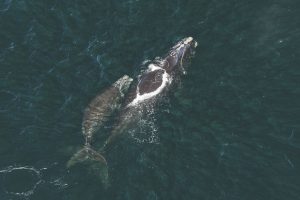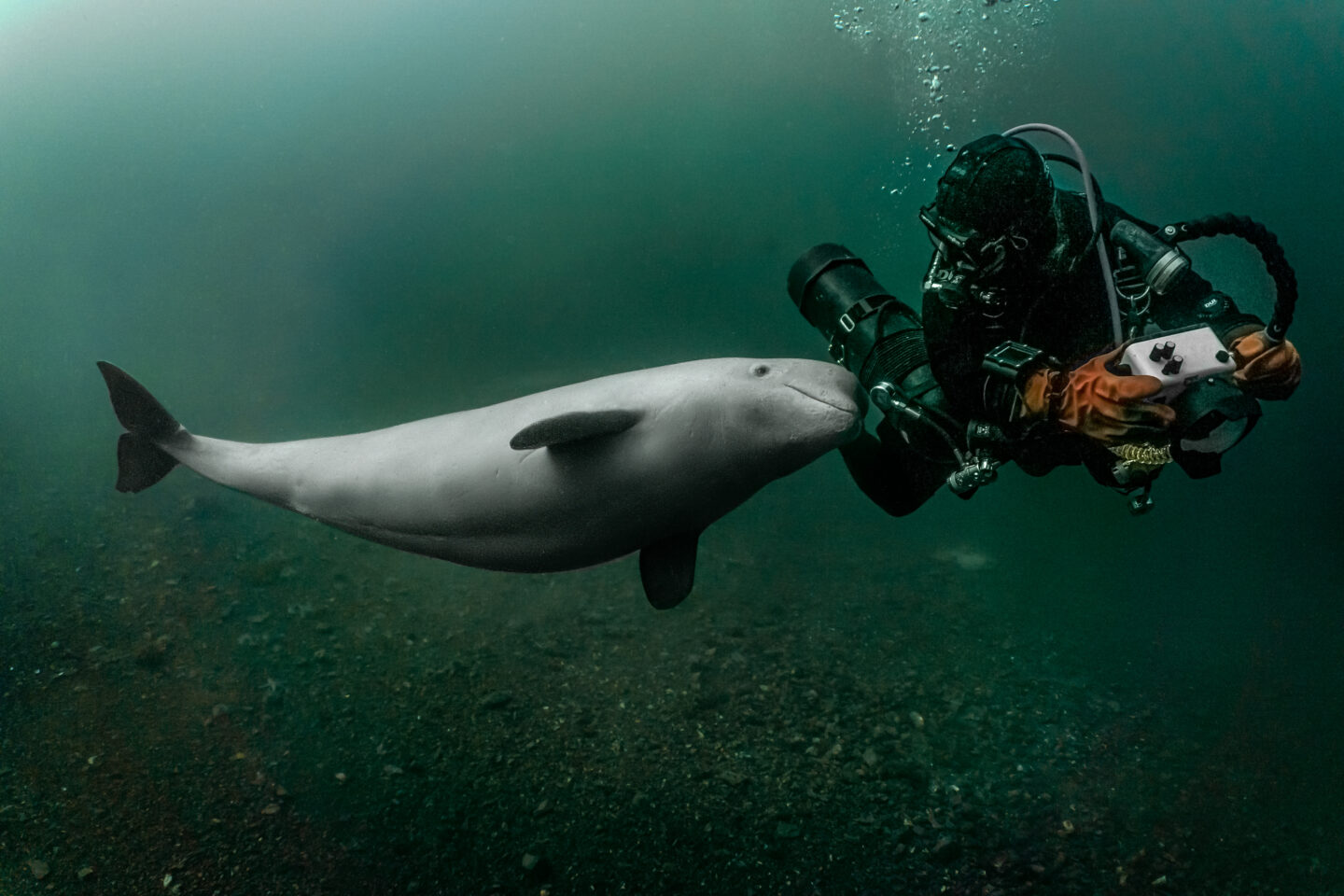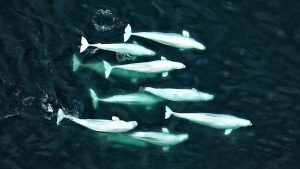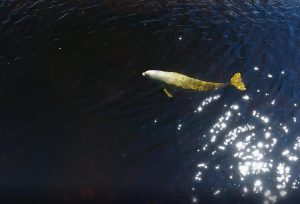
Wildlife
Punctuation’s mark: Can we save the critically endangered North Atlantic right whale?
After a series of mass deaths in recent years, what can we do?
- 4110 words
- 17 minutes
Kids

Beluga whales are one of the most recognizable species of whale thanks to their white colouring and thick bodies which are primarily made of blubber (40 to 50 per cent of their bodyweight).
Common name: Beluga whale
Scientific name: Delphinapterus leucas
Inuktut name: ᕿᓇᓗᒐᖅ (qilalugaq)
Type: Mammal
Diet: Carnivore
Group name: Pod
Weight: 500 to 1,500 kilograms
Length: 4 to 6 metres
COSEWIC Status: Endangered
Unlike most whales, a beluga has seven vertebrae in its neck that are not fused, allowing it to turn its head in all directions.
The beluga whale is one of the smallest species of whale, only able to grow up to four or five metres long. Belugas have sharp teeth, no dorsal fin, and a spindle-shaped body that is wider in the middle and tapers toward the ends, an adaptation that helps it swim under the ice in its Arctic home. Belugas can dive to depths of almost 1,000 metres, and stay underwater for more than 20 minutes at a time!
The word “beluga” comes from a Russian phrase meaning “the white one,” but belugas are actually born a grey or brown colour. With thick layers of blubber to insulate them from cold water, belugas weigh in at anywhere between 500 and 1,500 kilograms.
One particularly notable characteristic of beluga whales is the rounded bulge on their forehead. This bulge is called a melon and is believed to help the whales produce their wide range of sounds, used for communication and echolocation, as well as allowing them to copy a variety of other sounds. The sounds belugas make include clicks, whistles and other vocalizations that make up a complex language used to talk with other belugas in their pod. This language caused early whalers to nickname them the “canaries of the sea.” Their chatter can sometimes be heard through the bottoms of boats!
Belugas use echolocation to find their food, which consists of fish, crustaceans and worms.
Belugas live mostly in the Arctic, but migrate south as the ice pack builds up in the fall. There are seven main populations of belugas in Canada. The most southern group lives in the St. Lawrence estuary in Quebec; the others live around Baffin Island, Hudson Bay and in the Beaufort Sea.
Are you passionate about Canadian geography?
You can support Canadian Geographic in 3 ways:

Wildlife
After a series of mass deaths in recent years, what can we do?

Wildlife
Sound is an integral part of a beluga’s life, so the quality of the underwater acoustic environment is very important for the health and survival of belugas

Wildlife
Plus even more whale news: grey whale die off declared over, using forensics to investigate humpbacks, a new species of orca, and a sad spate of right whale calf deaths

Wildlife
This first of its kind collaboration led to the rescue of baby beluga in Nepisiguit River